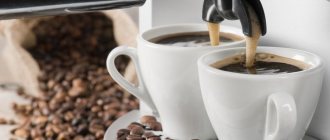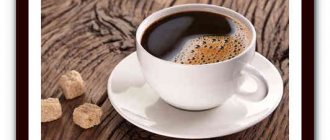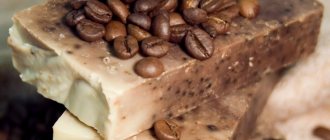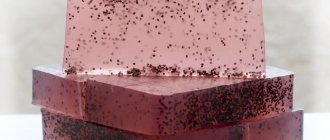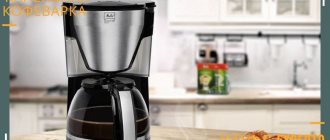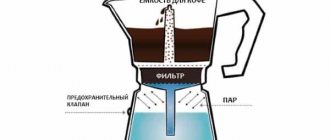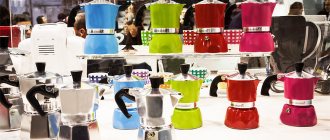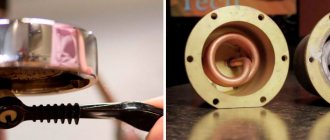Most Russians start their day with an aromatic coffee drink. High-quality brewed coffee cannot compare with an instant drink, so many are faced with the need to purchase a coffee maker.
The most affordable, compact and easy to use are drip or filtration coffee makers, where ground coffee is poured into a special filter and after processing a delicious, aromatic, invigorating drink is obtained.
You can easily purchase them at any hardware store. The choice of models is very large, as is the range in price. But the principle of operation is similar for all models.
Let's look at how drip coffee makers work. It was not by chance that they were given this name; it is clear that drops should form in the system. First, water is poured into the equipment, then grains are poured into the compartment and the process is started. The water begins to flow down to the heating element located at the bottom of the equipment.
When exposed to high temperature, the liquid expands and evaporates. The steam enters the top of the coffee maker and condenses, forming droplets. Their temperature is almost 100C. These drops exit through the hole above the coffee and land on it. At this moment, the water reaches 87-95C, which is optimal for preparing Americano. As a result, the coffee ends up in the coffee pot, and from there it goes into the cups.
As the name suggests, a filter coffee maker involves the use of filters. Depending on the type of coffee maker, different types of filters are used.
Experts recommend choosing not reusable filters for drip coffee makers, but disposable ones, this is especially important if the coffee maker is inexpensive and of a little-known brand. More expensive models usually come with both options; they can be purchased and installed separately.
If you still prefer a coffee maker with a permanent filter, be prepared for the fact that it will have to be washed regularly. Moreover, permanent devices without proper care contribute to the growth of bacteria and spoil the coffee with a specific aroma.
Types of filters
Filters for drip coffee makers come in 3 types:
- Paper options. They have a cone-shaped or cup-shaped shape, depending on the type of device holder. Filters of this type are convenient because they perfectly retain the smell of coffee due to their own structure with micropores, remove oil components and have a low price. In addition, they do not pollute the environment, are harmless to humans and have a long shelf life. This element is replaced after each brewing procedure;
- Nylon filter for coffee maker. It is a plastic base covered with nylon. These elements require constant and painstaking cleaning. The average lifespan of 1 filter is 60 brews. Its advantages include economic benefits and a solid service life with proper care. Cons: the need for constant cleaning and the use of coarsely ground coffee, because small powder provokes rapid wear;
- The gold filter element is a modernized variation of the nylon analogue, coated with titanium nitride. Lasts more than 150 refills, washes well, but is only suitable for coarse grinding.
Filter sizes and useful tips
The filter size for the coffee maker is indicated on the package by the manufacturer. Depending on the required number of servings of finished coffee, the appropriate parameter is selected. It can be from one to 12 cups. Universal disposable filters for coffee makers have appeared on the market, which are suitable for all types of devices and are sold in packs of 100 pieces.
If the filter fails and you need coffee very urgently, you can use cardboard napkins, calico or cotton cloth, or gauze folded in several layers.
Greenish tea tastes amazing and has a subtle aroma. Active composition and method.
Hua Li Zhi (jasmine pearl) tea is a unique variety of greenish tea. This drink has...
Most people associate Eastern tea traditions only with China. Not enough people know that in the Land of the Rising Sun there is more tea.
The beginning of the history of the Fortnum&Mason brand can be considered in 1707. This year William.
Coffee is quickly gaining popularity among the population, which is not mind-blowing, because this drink has.
Most of the inhabitants of Italy believe that the most delicious and real coffee is prepared exclusively in.
One of the most popular cocktails of its kind is coffee with cognac. In making it.
Not long ago, English researchers at a scientific nutrition center managed to obtain a rather unusual drink.
The widespread introduction of innovative technologies has affected all spheres of life. Now in everyday life.
Any coffee machine requires constant maintenance from its owner. This.
Many coffee lovers want to enjoy the taste.
Every year, super-automatic coffee machines are becoming more and more popular. In this article we will talk about.
There are a number of types of coffee makers: carob, drip, geyser.
There are four types of coffee makers: drip.
A geyser-type coffee maker allows you to prepare coffee in...
Coffee is presented on store shelves in incredible abundance. Demand gives birth.
How can you change a coffee filter?
As soon as coffee lovers wake up, they immediately head to the kitchen. Imagine that you did exactly that, but found that the coffee filters had run out and you couldn’t make coffee. There is no time to run somewhere to the store before work. And a morning without coffee is not a morning. What should I do? Replace the filter with something similar!
DIY coffee makers?
Fabric coffee filters are rare in Russia, but they are widely used because they are easy to make at home, on your own.
On average, when working by hand, it takes up to 10 minutes to create one product; if you have a sewing machine, it takes even faster. The material used is natural fabrics - linen, cotton, muslin, preferably unbleached. To make your own coffee filter, take a disposable paper filter that fits your coffee maker, unroll it, and transfer the unroll onto the fabric, using seam allowances. Sew by analogy with paper. The edges need not be processed.
Fabric filters should be washed after each use. Therefore, it is better to make several at once, at least 2 pieces, and possibly more. The fabric turns brown over time. You can even wash it in a machine, but without the use of synthetic detergents, fragrances, or conditioner, so coffee filters cannot be placed in a regular batch of laundry items. Flavorings will add an extraneous aroma and taste to the drink, and besides, drinking coffee with residual detergents is not healthy.
On average, one fabric filter lasts for 3-6 months, depending on how many cups of your favorite drink you make.
Please note: the pores in natural fabric are wider than those in paper, so there will be some amount of grounds in the drink. But this is the most environmentally friendly material.
Cotton fabric as a filter
Cotton fabric works great as a coffee filter. The main thing is that the spaces between the weaves of the threads are smaller than grains of ground coffee. The fabric must be new, spotless and dense. Well, even if the fabric is not new, you need to take one that has previously been washed no more than once. Washing cotton increases its suction capacity. The older the fabric, the more coffee will be absorbed into it, and we don’t want that.
If you reuse the fabric as a filter, after the first use you should not wash it with soap and other aromatic detergents, as this will subsequently affect the taste of the coffee passed through the fabric.
Gauze usually consists of loosely woven threads, but it can still be successfully used as a filter when brewing coffee. There are different types of gauze. Some are really completely loose, while others are dense and smooth. It is better to fold the gauze a couple of times so that it better retains the coffee grounds.
Natural (Brown) Coffee Filters: The Basics
Natural filters are easier to produce and less harmful to the environment (after all, paper is made from wood and its natural color is brown), but without first rinsing the filter, you risk introducing the taste and aroma of cardboard into your cup.
It's worth noting that using a white filter does not completely protect you from cardboard taste, as the quality of bleaching and manufacturing plays a big role. Therefore, regardless of the brand, type of paper filters or their bleaching technology, rinsing before use should not be neglected.
Paper towels
When you have absolutely nothing at hand and want coffee, you can use a paper towel instead of a filter. It is porous, so it allows liquid to pass through it perfectly. Cut a filter into a cardboard shape from a cardboard towel and brew your coffee as you normally would. Not the most successful option, naturally, but it helps the situation.
But on occasion, you can stock up on these items so that you don’t have to worry about coffee filters at all.
So which is better?
In fact, there are too few differences between bleached and unbleached filters. Of course, bleached products go through an additional process in production, so they contain some kind of bleach. But none of the types of filters affect the taste of coffee. Unbleached filters are almost always safer for the environment. If you are concerned about the state of Mother Earth, then you should buy natural filters.
Whatever you choose, always buy high quality products. This will definitely affect the taste of the final drink. But the level of bleaching does not play any role at all. Simply choose the size and thickness you need so you can enjoy a great cup of your favorite drink every time.
In the world of coffee lovers, there is a lot of controversy about these simple products - filters. Should I use a paper or metal filter? The disagreement on this issue has been going on for many years, and it looks like it will continue for just as long.
But which filters make the best coffee? Of course, a lot depends on subjective perception. After all, the best coffee isn't always what it's cracked up to be. To help resolve this debate, let's look at the different types of filters and try to choose the best one.
Other options
If you can’t live without coffee, keep a package of instant coffee on hand. If the filters suddenly run out, you won’t be left without a cup of your morning favorite drink.
You can also purchase a French press - a special device that resembles a teapot. You can also brew coffee with it. Filters are not necessary at all when using a French press.
You can learn how to make Turkish coffee. When brewing coffee using the Turkish method, a lot of grounds remain on the bottom of the cup, so it is not recommended to drink the coffee completely.
Now you understand that if you run out of coffee filters, you can strain the coffee through gauze, thick cloth, paper towel, or use metal filters, which are great to purchase in advance. Naturally, the taste of coffee may be different, but you won’t be left without a cup of the most delicious drink during the day, and that’s the main thing!
What kind of coffee is suitable for a filter coffee maker?
Daria Ryadozubova / 01/26/2018
Filter coffee, drip coffee, regular, South American light. This brewing method goes by many names. Worldwide consumption of this coffee is 60-70%. Filter coffee is unique in that it is not at all difficult to prepare. Also, it is very comfortable to brew. Using this method, you can prepare any amount of drink (from 0.1 liter or more at once). It should be noted that filter coffee makers are becoming increasingly popular in the world, including Italy and Russia.
Coffee maker filters come in different types. There are home and professional ones. They all work on the same principle. Professional coffee makers usually use paper filters, so the coffee filter will differ slightly from the one made in a home coffee maker. But this does not mean that coffee at home will be the least delicious. Do not worry.
Home drip coffee makers are easy to use. They consist of a clear tube and a mesh filter (which does not require an additional cardboard filter). The basics of making coffee in drip coffee makers are the same as in any other method of brewing coffee. The water should be clean and cool (not boiled, not tap). We calculate the amount of coffee based on 60 grams per 1 liter of water and remember that one heaped teaspoon is equal to approximately 7 grams.
Drip coffee makers are good because their transparent flasks have divisions indicating the amount of water per serving. If the portion is 150-200 ml, then we will need two teaspoons for brewing.
For offices, places with a huge number of guests, and public catering establishments, we recommend using a professional filter coffee maker. The advantages are obvious!
- Allows you to quickly prepare coffee for a huge number of guests, and there were a lot of guests!
- Connects to a regular power supply and does not require additional electronic loads.
- It is simple to operate, does not require global equipment options, if you configure the coffee grinder correctly and follow the instructions. A non-professional barista can make coffee.
- No water connection required.
- Small size. Small set of coffee grinder, coffee maker and filters.
